You’ll achieve maximum greenhouse pest control with three targeted neem oil solutions. First, use concentrated neem oil spray during cooler parts of the day to eliminate aphids and whiteflies while protecting beneficial insects. Second, apply a soil drench formula mixing 1-2 tablespoons neem oil per gallon of water to disrupt root-zone pests like fungus gnats and root maggots. Third, maintain weekly treatments for consistent multi-pest management, ensuring you monitor plants closely and follow manufacturer’s dilution instructions for peak effectiveness throughout your growing season.
Concentrated Neem Oil Spray for Aphid and Whitefly Control
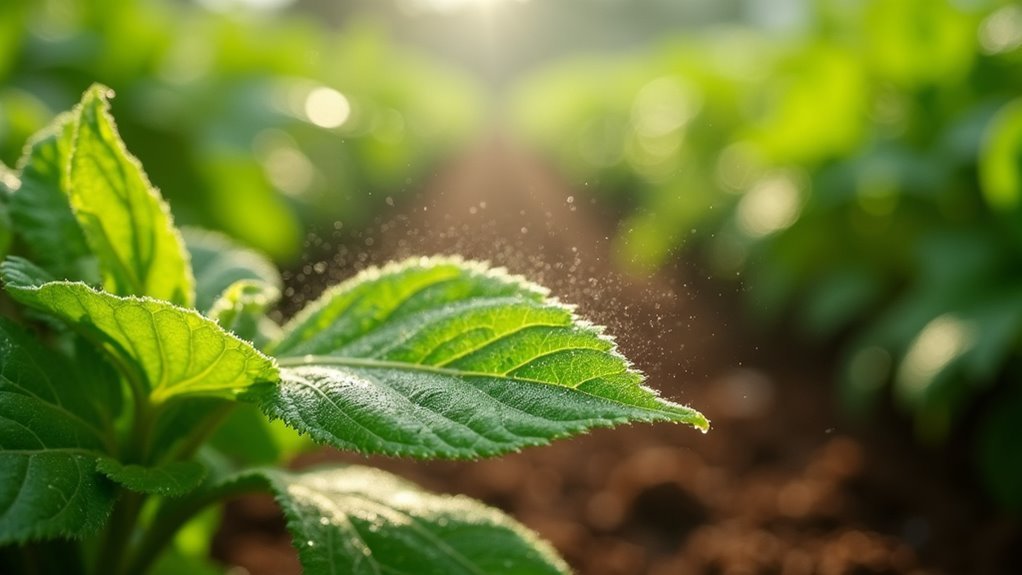
Two common greenhouse pests—aphids and whiteflies—can quickly overwhelm your plants, but concentrated neem oil spray offers an effective natural solution that disrupts their entire life cycle.
When you apply neem oil properly diluted, you’ll target these pests without harming beneficial insects in your greenhouse environment.
The secret lies in azadirachtin, neem oil’s active compound that repels pests and prevents larvae from maturing into adults.
You’ll also deter feeding activities while creating a protective barrier on leaves that makes it harder for new pests to settle.
For maximum effectiveness, spray during cooler parts of the day to prevent leaf burn and enhance absorption.
Regular applications help prevent infestations before they start, giving you consistent pest control throughout the growing season.
Neem Oil Soil Drench Formula for Root-Zone Pest Prevention
While foliar sprays target visible pests above ground, neem oil soil drench takes your pest prevention strategy below the surface where root-zone threats like fungus gnats, root maggots, and soil-dwelling aphids can devastate your plants before you even notice damage.
Creating an effective soil drench requires mixing 1-2 tablespoons of pure neem oil with one gallon of water, adding liquid soap drops for proper emulsification. The solution penetrates soil, allowing roots to absorb neem’s active compounds for systemic protection.
This concentrated mixture creates a protective barrier that works from within, giving plants internal defense against hidden soil-based pest threats.
Key benefits of neem oil soil drench:
- Disrupts insect life cycles at the root level
- Provides 4-6 weeks of systemic pest protection
- Prevents fungus gnat larvae development in soil
- Controls root maggots before they damage plants
- Offers organic alternative to chemical soil treatments
Always test small areas first before widespread greenhouse application.
Weekly Maintenance Neem Oil Treatment for Multi-Pest Management
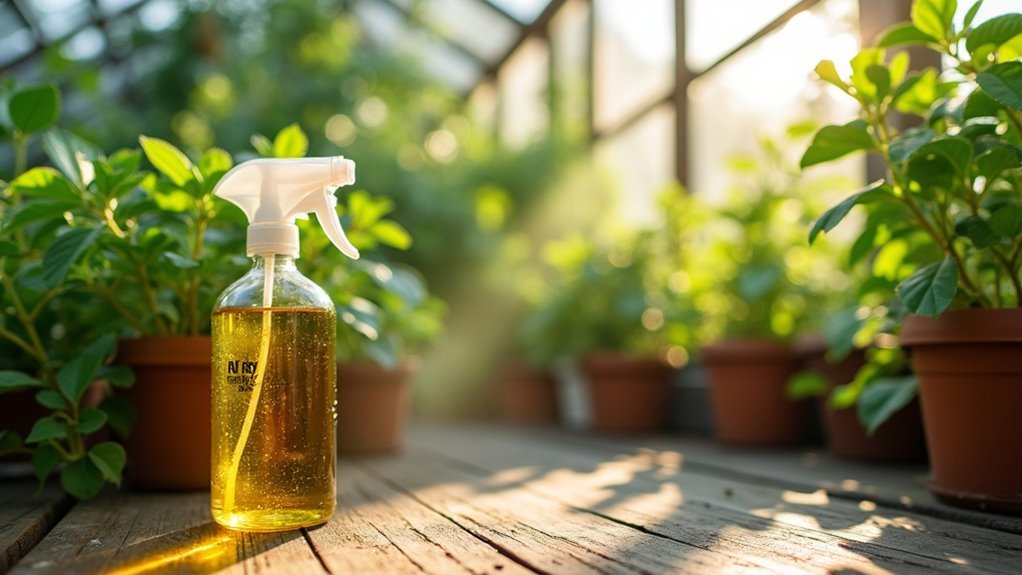
Three critical factors determine the success of your weekly neem oil maintenance program: timing, concentration, and coverage consistency. You’ll disrupt aphids, spider mites, and whiteflies by suffocating them and reducing their reproductive capabilities through regular applications.
| Application Factor | Best Practice |
|---|---|
| Timing | Early morning or late afternoon |
| Dilution | Follow manufacturer’s instructions exactly |
| Frequency | Weekly applications for consistent protection |
| Monitoring | Watch for pest resurgence signs |
| Integration | Combine with ventilation and humidity control |
Your neem oil treatments create a protective barrier that deters future infestations when used consistently. Monitor plants closely after each application, as pests may develop resistance without proper management. Maximize effectiveness by improving greenhouse ventilation and controlling humidity levels, creating unfavorable conditions for pest survival.
Frequently Asked Questions
Can Neem Oil Be Used Safely Around Pets and Children in Greenhouses?
You can use neem oil safely around pets and children when you apply it properly. You’ll need adequate ventilation, should avoid direct contact, and must wait for surfaces to dry before allowing access.
What Temperature Ranges Are Optimal for Neem Oil Effectiveness in Greenhouses?
You’ll get best results when your greenhouse temperature stays between 65-75°F. Don’t apply neem oil when it’s above 80°F or below 50°F, as extreme temperatures reduce effectiveness and can stress your plants.
How Long Does Neem Oil Remain Active After Application in Greenhouse Conditions?
You’ll find neem oil stays active for 3-7 days in greenhouse conditions. Factors like temperature, humidity, and light exposure affect its breakdown rate. Higher temperatures and intense UV light reduce its effectiveness more quickly than cooler, shaded environments.
Will Neem Oil Damage or Stain Greenhouse Plastic Coverings and Glass Panels?
You don’t need to worry about neem oil staining or damaging greenhouse materials. It won’t harm plastic coverings or glass panels when properly diluted and applied according to label instructions.
Can Neem Oil Be Mixed With Other Organic Pesticides for Enhanced Results?
You can mix neem oil with other organic pesticides like insecticidal soap or diatomaceous earth, but test compatibility first. Don’t combine with copper-based fungicides as they’ll cause plant damage.
In Summary
You’ve now got three powerful neem oil strategies to tackle your greenhouse pest problems head-on. Whether you’re dealing with aphids clustering on your plants, soil-dwelling pests threatening root systems, or multiple pest types requiring consistent management, these targeted solutions will keep your greenhouse thriving. Remember to rotate between treatments and monitor your plants regularly. With consistent application, you’ll maintain a healthy, pest-free growing environment year-round.

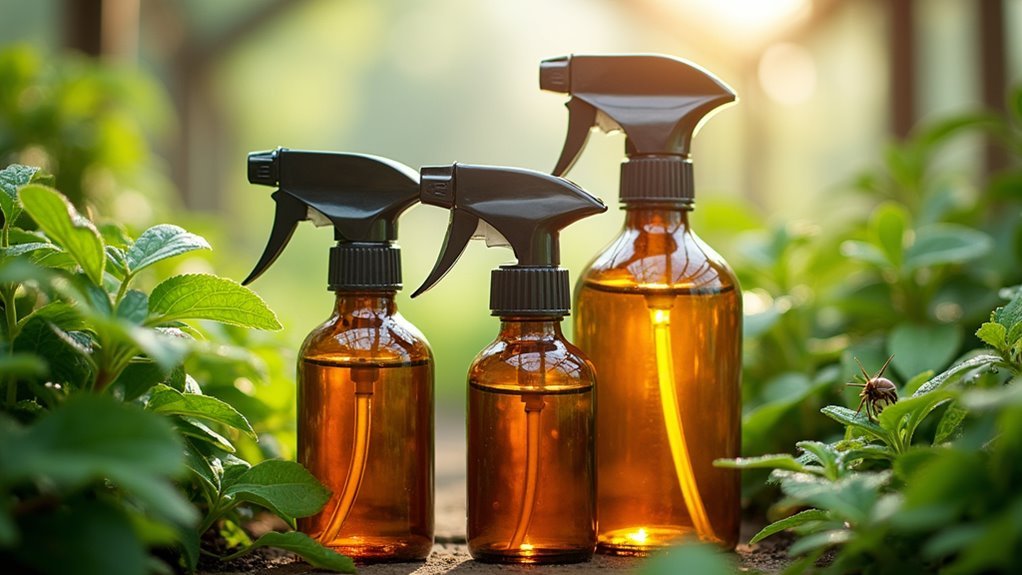
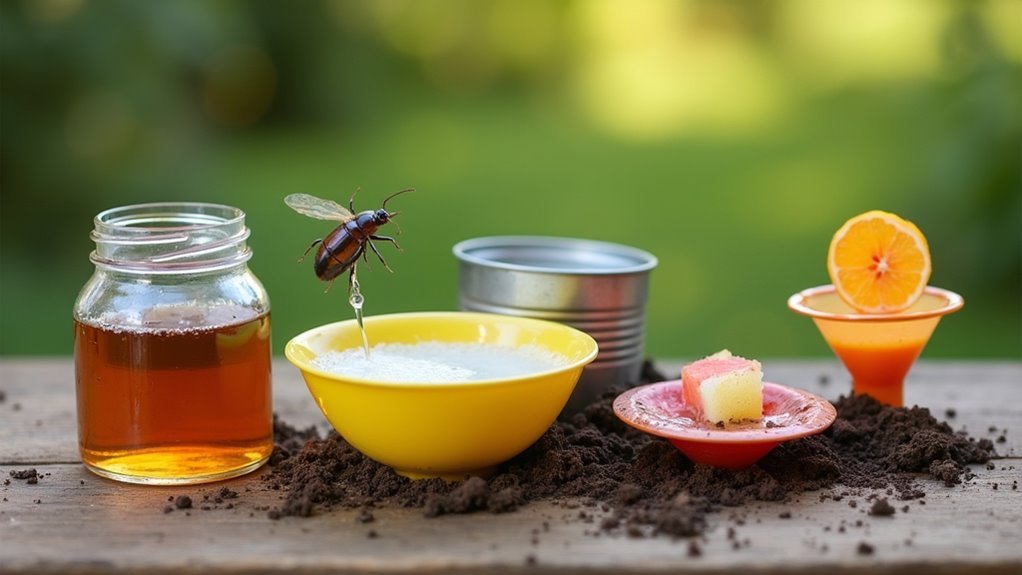
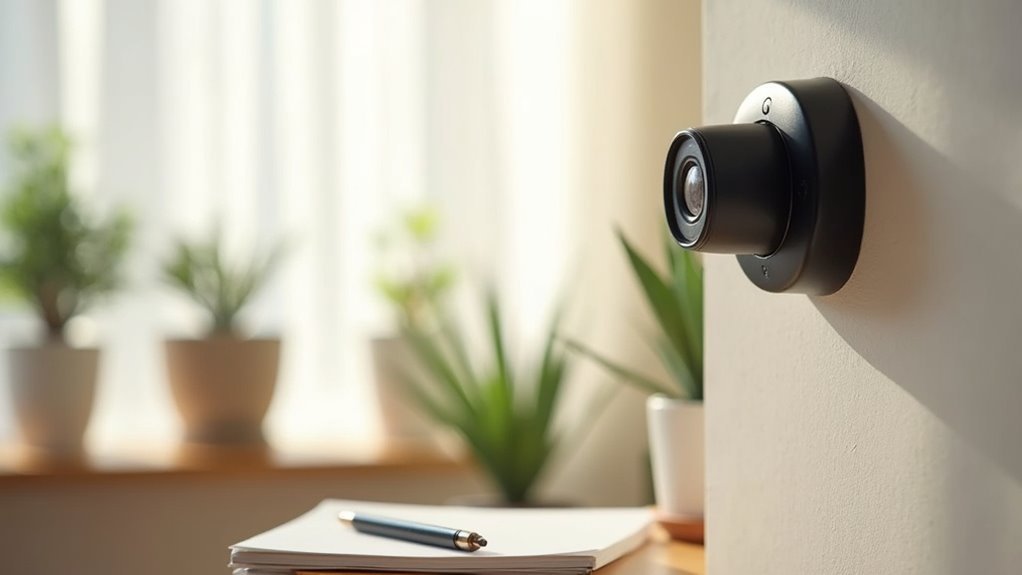

Leave a Reply